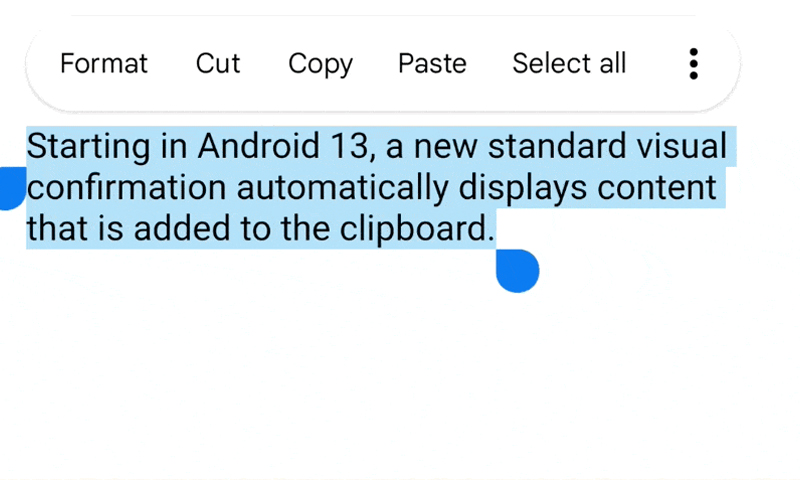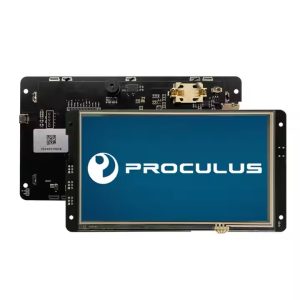New Display to Android 13: Download your apk to it and test!
Based on Rockchip’s high performance core board RK3568, the series of Proculus high-end Android LCD Modules have been perfectly adapted to work with Android 13. When equipped with Android 13 OS, the product reflects more superior characteristics. You are invited to try Android 13 download your apk to it and test it.

P10600HY070K_T01
So what are the new breakthroughs in Android 13 compared to its predecessor?Android 13: Functionality Updates
1.Increased efficiency of the startup screen Android 13 improves Splash Screen API efficiency. The system now auto-sets animation duration from AnimatedVectorDrawable, unlike older versions requiring manual windowSplashScreenAnimationDuration. Use the windowSplashScreenBehavior property to better control whether the app always displays the icon on the startup screen in Android 13 and later. 2.App icons with themes The application icon changes colour with the theme. The application is to provide an adaptive icon and a monochrome application icon and point to this monochrome application icon via the <adaptive-icon> element in the manifest. The user then enables the app icon with a theme in the system settings. This way the system will determine the tone colour based on the wallpaper and theme, which will be applied to the monochrome app icon. 3.Clipboard Preview Starting with Android 13, the system performs the following actions by default when adding content to the clipboard:- Make sure the content has been successfully copied
- Provide a preview of the copied content


Privacy and Security Protection
1.Wifi permission change
WIFI, as the medium of connection for each terminal, should receive extra attention from developers. In Android 13, in order to avoid apps asking for excessive permissions, leading to the leakage of users’ private information, the system divorces WIFI permissions from location permissions and introduces a new permission mechanism: NEARBY_WIFI_DEVICES. If the app only needs to call WIFI-related APIs but not location-related APIs, then the developer can use the NEARBY_WIFI_DEVICES mechanism, the process is shown below:
2.Developers downgrade permissions
Starting with Android 13, your app can revoke unused runtime permissions. This API allows your app to perform privacy-enhancing tasks, as shown below:- Revoke unused permissions.
- Improve user trust by following permissions best practices. You may want to consider displaying a dialogue box to the user that shows the permissions that you are actively revoking.
3.Secure export of context-registered receivers
Android 13 enhances runtime receiver security by introducing new functionality. Apps can now explicitly specify whether registered broadcast receivers should be exported and visible to other apps on the device. This provides better control over eceiver accessibility compared to previous Android versions, improving overall app security and data protection. Previously, any app could send broadcasts to unprotected dynamic receivers without signature permissions. This export configuration applies to apps that perform at least one of the following actions:- Use the ContextCompat class from the AndroidX Core library version 1.9.0 or later.
- Targets Android 13 or later.
4.APK Signature Programme v3.1
Android 13 supports APK Signature Scheme v3.1. Upgraded APK Signature v3 resolves rotation problems for better security. Specifically, v3.1 supports SDK version locality, which allows rotation to a higher version of the platform. The v3.1 signing scheme uses chunk IDs that are not recognised in 12L or lower. as a result, the platform applies the following signer behaviour:- Devices with Android 13 or later use the rotating signer in the v3.1 chunk.
- Devices with older versions of Android ignore the rotating signer and use the original signer from the v3.0 chunk.

Adaptability and compatibility
1.Rich and stable visual experience Starting with Android 13, the system supports programmable RuntimeShader objects whose behaviour is defined through the Android Graphics Shading Language. With these shaders, developers can easily implement ripple effects, blurring effects, and stretched rollover tops to bring a richer visual experience to users. 2.Large Multi-Window Display In Android 13, users can display multiple Activity making full use of the large screen display space. Developers will need to create an XML configuration file or call the Jetpack WindowManager API to determine exactly how multiple Activities will be laid out on the same large screen, such as displaying two Activities in a cut-out task window. Android 13 improves compatibility for apps not yet optimized for large screens, ensuring better UI coordination and display performance. It automatically adjusts unconfigured apps to fit larger displays, providing users with a more polished and visually consistent experience.Conclusion
Android 13 has new features that are small but beautiful, more detailed privacy permissions, and more harmonious adaptation for large screens. Thanks to Android 13’s excellent adaptability and compatibility, it runs perfectly in our LCD module based on Rockchip’s RK3568 high-performance chip like P10600HY070K_T01. If you are interested to try Android 13 display download your apk to it and test it, please feel free to contact us for a quote. For customers who have higher requirements on human-computer interaction and interface quality, you can choose this product of our company, and I believe it can make your application development simpler and more convenient, and present a more perfect unity of quality.


Category:
Author:
Client:
Date:
PHP Code Snippets Powered By : XYZScripts.com
 English
English


